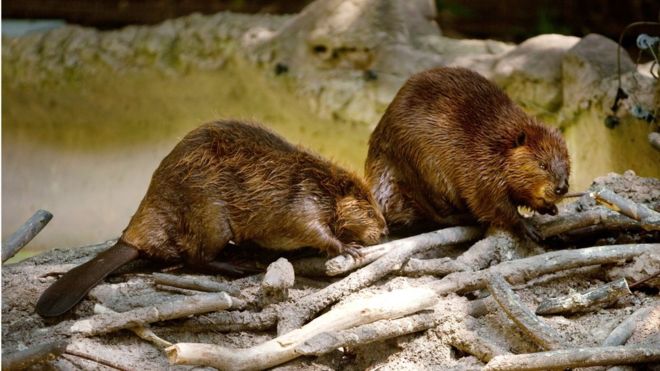In the aftermath of World War II, Argentina embarked on a unique agricultural endeavor that aimed to bolster its fur trade. The plan, initiated in 1946, was straightforward yet ambitious: introduce 25 pairs of Canadian beavers into the Argentine wilderness. The decision-makers of the time could hardly have predicted the extensive ecological impact that this well-intentioned act would set in motion.

Beavers, known for their industrious nature, are native to North America and are adept at altering their environment to suit their needs. They are ecological engineers; however, in an environment like Argentina's, without any natural predators, the beavers thrived a little too well.
From the original 50 beavers, the population experienced a surge, defying initial expectations. By 2015, over seven decades later, the beaver population in Argentina was estimated to have ballooned to more than 200,000. In Tierra del Fuego, the southernmost tip of the continent, the impact was most acutely felt. The beavers, unconstrained and unchecked, became a formidable force, altering the very landscape they inhabited.
The region's once-sturdy trees, some that had stood for centuries, began to fall victim to the beavers' incessant gnawing and construction of dams. Saplings were toppled within hours, and mighty trees met their end in mere days. This relentless tree felling has a significant ecological consequence: many of these trees will not regenerate. The beavers' consistent presence and perpetual appetite for wood ensure that reforestation is all but a fantasy.
Riverbanks, vital to the health and stability of ecosystems, have suffered greatly. Beavers, with their instinctive drive to build dams, have caused widespread water overflow, leading to extensive flooding. This flooding is not a mere inconvenience; it is transformative to the landscape, rendering vast tracts of land uninhabitable and useless for agricultural purposes.
The soil, saturated beyond its capacity, becomes acidic and hostile to plant life. The vegetation that once thrived begins to perish. Argentina, a country with a robust agricultural sector, finds itself grappling with land that can no longer support the grazing of horses, goats, and cattle. Moreover, the land becomes so saturated that construction and development are virtually impossible.
Seeking Solutions: The Beaver Culling Program
The extent of the damage compelled Argentina to seek a remedy and collaborate with its neighbor, Chile. In 2015, a joint beaver culling program was initiated, a strategy that, while controversial, was deemed necessary. The plan was met with a rare consensus, receiving nods of approval from environmental groups and biologists, given the absence of natural predators and the beavers' environmental impact.
The program's aim is to cull the beaver population to a manageable number, an undertaking expected to last 10 to 15 years. This initiative underscores a harsh lesson: interference with Mother Nature can yield unpredictable and often negative consequences. The transplantation of species, as evidenced by Argentina's experience, should be approached with utmost caution and foresight.
While some might view the culling as severe, it is a reflection of the harsh realities of managing an ecosystem that has been significantly altered by human intervention. The beaver issue in Argentina serves as a potent example of how introducing a non-native species to an ecosystem can lead to unintended and often irreversible changes.
Ecological and Economic Impacts
The beavers' impact extends beyond environmental degradation. The economic repercussions are profound. Argentina's reliance on agriculture and livestock as pivotal economic pillars means that the beaver infestation has far-reaching consequences. The transformation of fertile lands into waterlogged, acidic soils disrupts local economies, affecting livelihoods and food production.
It's a situation that illustrates the complex interplay between the environment and the economy. When ecosystems are disturbed, the effects cascade through all facets of society. As Argentina battles the beaver dilemma, it becomes a prime case study for environmental scientists and economists alike, showcasing the importance of ecological balance for sustainable development.
Lessons for the Future
The Argentine beaver crisis teaches us a valuable lesson in ecological humility. The repercussions of introducing a foreign species into an ecosystem are not always immediately apparent and can take decades to unfold. As such, this event has influenced policy changes and has become a cautionary tale for conservationists worldwide.
The case has also sparked international interest in the dynamics of species relocation and has become a topic of study in the realm of ecological management. The consensus is clear: human intervention in nature requires a nuanced, well-researched approach with long-term monitoring and management plans.
Argentina's foray into fur trading by introducing Canadian beavers serves as a reminder of the delicate balance of our planet's ecosystems. The ongoing efforts to control the beaver population are a testament to the enduring impact of human decisions on the environment. As we look forward, it is crucial that we take the lessons learned from such events to heart, ensuring that future interventions in nature are undertaken with the utmost care and respect for the complex web of life that sustains us all.




